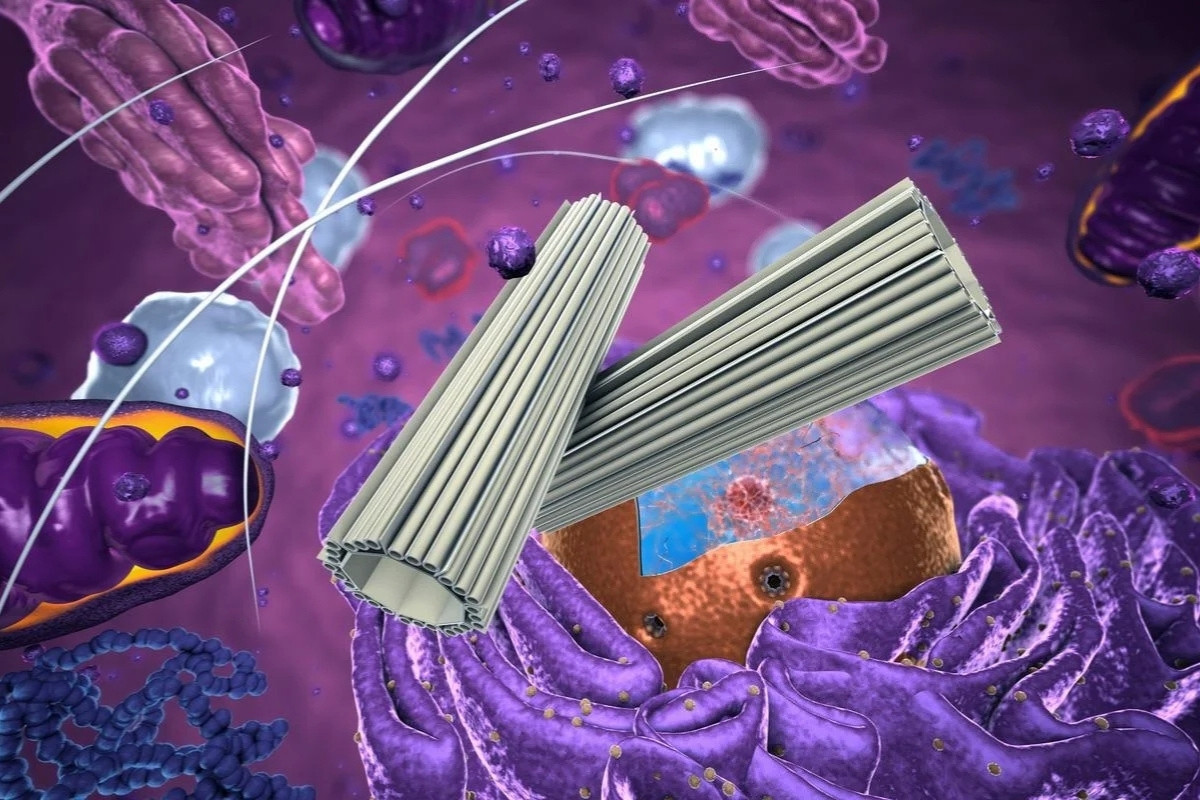
What exactly is a centrosome? The centrosome is a small structure found in animal cells that plays a crucial role in cell division. Why is it important? It helps organize microtubules, which are part of the cell's skeleton, ensuring that chromosomes are properly distributed during cell division. Where is it located? Typically near the nucleus, the centrosome consists of two centrioles surrounded by a mass of proteins. How does it work? During cell division, the centrosome duplicates, and each pair moves to opposite ends of the cell, forming the poles of the mitotic spindle. Why should you care? Understanding centrosomes can help in studying diseases like cancer, where cell division goes awry.
What is a Centrosome?
The centrosome is a small organelle found in animal cells. It plays a crucial role in cell division and the organization of microtubules. Here are some fascinating facts about centrosomes that will help you understand their importance.
- Centrosomes are often referred to as the "microtubule-organizing centers" of the cell.
- They are typically located near the nucleus in animal cells.
- Each centrosome consists of two centrioles arranged at right angles to each other.
- Centrioles are cylindrical structures made up of microtubules.
- The centrosome duplicates once per cell cycle, ensuring each daughter cell inherits one centrosome.
- During cell division, centrosomes help form the mitotic spindle, which separates chromosomes.
Centrosome Structure
Understanding the structure of centrosomes can provide insight into their function and importance in cellular activities.
- Each centriole within the centrosome is composed of nine sets of microtubule triplets.
- The surrounding matrix of the centrosome is known as the pericentriolar material (PCM).
- PCM contains proteins essential for microtubule nucleation and anchoring.
- The centrosome's structure is highly conserved across different species, indicating its fundamental role in cellular processes.
- In some organisms, centrosomes can have additional structures, such as basal bodies, which are involved in forming cilia and flagella.
Centrosome Functions
Centrosomes are involved in several critical cellular functions beyond just cell division.
- They play a key role in maintaining cell shape by organizing the microtubule cytoskeleton.
- Centrosomes are involved in intracellular transport by serving as tracks for motor proteins.
- They help position organelles within the cell, ensuring proper cellular organization.
- Centrosomes are crucial for the formation of cilia and flagella, which are essential for cell movement and sensory functions.
- They participate in signaling pathways that regulate cell cycle progression and cell division.
Centrosome and Cell Division
The role of centrosomes in cell division is one of their most well-known functions. Here are some specific details about their involvement.
- During mitosis, centrosomes migrate to opposite poles of the cell to help form the mitotic spindle.
- The mitotic spindle is responsible for separating sister chromatids into daughter cells.
- Centrosomes ensure the accurate distribution of chromosomes, preventing genetic abnormalities.
- Errors in centrosome function can lead to aneuploidy, a condition where cells have an abnormal number of chromosomes.
- Centrosome abnormalities are often associated with cancer and other diseases.
Centrosome Abnormalities
Abnormalities in centrosome number or structure can have significant consequences for cellular function and health.
- Centrosome amplification, where cells have more than two centrosomes, can lead to abnormal cell division.
- This amplification is commonly observed in cancer cells and is associated with tumor progression.
- Centrosome defects can also result in improper spindle formation, leading to chromosome missegregation.
- Mutations in genes encoding centrosome-associated proteins can cause a variety of genetic disorders.
- Some neurodevelopmental disorders, such as microcephaly, are linked to centrosome dysfunction.
Centrosome Research
Ongoing research continues to uncover new information about centrosomes and their roles in health and disease.
- Scientists are studying centrosomes to develop potential cancer therapies targeting centrosome abnormalities.
- Research on centrosomes is also shedding light on the mechanisms of cell division and its regulation.
- Advances in imaging techniques have allowed researchers to visualize centrosomes in greater detail.
- Studies on model organisms, such as fruit flies and zebrafish, have provided valuable insights into centrosome function.
- Understanding centrosome biology could lead to new treatments for genetic disorders linked to centrosome defects.
- The study of centrosomes remains a dynamic and evolving field, with new discoveries continually emerging.
The Centrosome's Role in Cell Biology
Centrosomes are crucial for cell division and organization. These tiny structures ensure chromosomes are correctly distributed during cell division, preventing genetic disorders. They also help organize the cell's internal structure, making sure everything's in the right place.
Understanding centrosomes can lead to breakthroughs in treating diseases like cancer, where cell division goes haywire. Scientists are constantly discovering new aspects of centrosomes, revealing their importance in cell biology.
Next time you think about cell division, remember the centrosome's vital role. It's a small but mighty part of what keeps life going. From ensuring proper cell function to aiding in medical research, centrosomes are truly fascinating. Keep exploring the wonders of cell biology, and you'll uncover even more amazing facts about these essential cellular components.
Was this page helpful?
Our commitment to delivering trustworthy and engaging content is at the heart of what we do. Each fact on our site is contributed by real users like you, bringing a wealth of diverse insights and information. To ensure the highest standards of accuracy and reliability, our dedicated editors meticulously review each submission. This process guarantees that the facts we share are not only fascinating but also credible. Trust in our commitment to quality and authenticity as you explore and learn with us.
